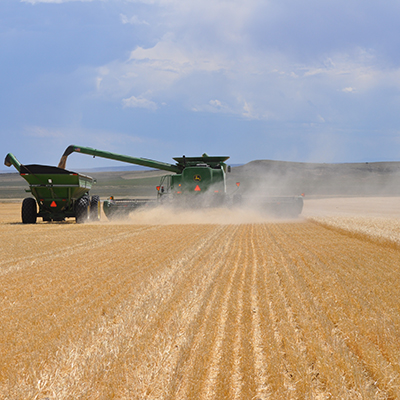 Sustainability: Our Environment
Sustainability: Our Environment
Responsible farming
Since barley represents the largest volume of raw materials purchased by Briess, securing a consistent source for our growing needs that meet our quality and environmental expectations was important.
The Bighorn barley growing region in Northwestern Wyoming/Southern Montana is known for producing some of the highest quality barley in the world, due to a semi-arid climate favored by barley, flood irrigation, three-crop rotation planting, and very experienced barley growing families. Those same characteristics also make it possible to produce barley using less energy, fertilizers and pesticides. By consolidating the bulk of Briess barley production in the Bighorn Basin, we achieved the ability to begin each Seed to Specialty™ cycle with barley produced with less environmental impact:
- Plowing techniques reduce greenhouse gas emissions by 412 tons annually
- Flood irrigation decreases energy usage more than 6 million kilowatt hours annually
- Flood irrigation water generates 9-10 million kilowatts of energy annually.
- Consolidated rail movement lowers greenhouse gas emissions by 75% versus over-the-road freight.
- A naturally dry climate, flood irrigation which keeps plant canopies dry, and planting barley bred for the region naturally limit pests in Bighorn crops.
- Full-time Briess employees partner with growers to help produce quality, high yielding crops with the least environmental impact possible.
Additional sustainable initiatives at other Briess operations further lessen our environmental impact:
- Efficient operating systems including heat recovery and variable frequency drives that reduce energy usage up to 60% were built into a five-story grain processing plant commissioned in 2017.
- Greenhouse gas emissions were reduced by 20 tons annually when a new 100,000-square-foot central distribution warehouse eliminated three warehouses and decreased internal product transfers by more than 20%.
- Energy usage for lighting decreased by 50% after over 380 legacy (metal halide and sodium vapor) lights were replaced with energy efficient LED lights throughout plants and warehouses.
- 90,000 lbs of elevator grain dust is diverted annually from a Wyoming landfill to a compost plant.
- 9 million gallons of high strength wastewater is diverted annually from the Chilton wastewater treatment center to help generate a continuous 1.5 megawatt of electricity at a mega-farm digester.


